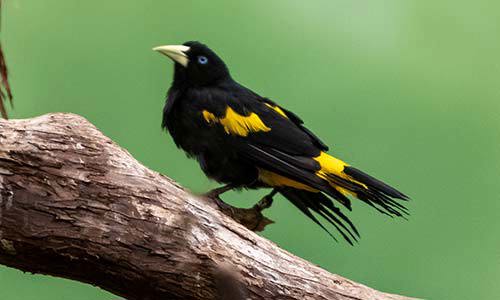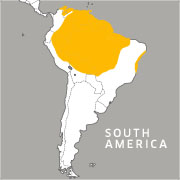Yellow-Rumped Cacique
Cacicus cela
You Can Find This Animal in the Tropical Forest
Look Up!
Want to spot this bird? Look up! Caciques fly freely through the Tropical Forest. They also like to build nests high in the tall tree behind the tamarin exhibit.
Committed to Conservation
Zoo New England helps yellow-rumped caciques by participating in the Species Survival Plan. By sharing research and knowledge, participating institutions work together to establish guidelines that best ensure the health of captive populations, and with success, the survival of endangered species.




